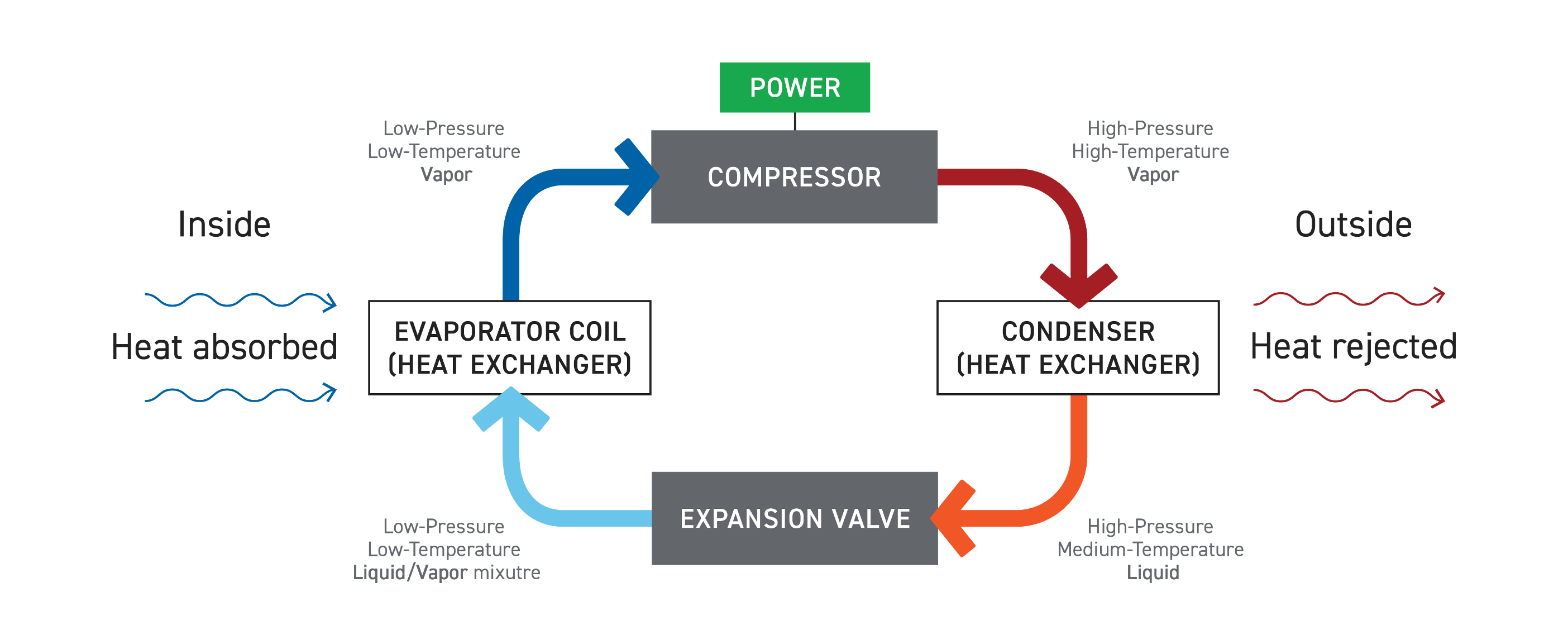How do Refrigerants Provide Cooling?
The direct expansion cycle (DX cycle) is the process used in cooling utilizing refrigerant as the medium of heat transfer.
Most traditionally, this process is thought of as providing cooling in a HVAC system although it can also provide heating in a heat pump system. The DX cycle is the only method of attaining very cold temperatures since the evaporation of water (an alternate medium for cooling) is limited by its freezing point. Besides providing cold air temperatures to cool a space, lower air temperatures also promote dehumidification which is desired in most commercial HVAC cooling applications.
The DX cycle is composed of 4 components that transfer heat or change the pressure of the refrigerant: 1) The compressor, 2) the condenser, 3) the expansion valve, and 4) the evaporator coil.
-
The compressor is where the work of the DX cycle is performed and the power is consumed. The compressor compresses the refrigerant increasing its pressure which promotes its movement through the piping loop connecting the four components. The refrigerant leaving the compressor is both high pressure and high temperature.
-
The objective of the cooling process is to get heat out of the building which is referred to as heat rejection. At the condenser, the refrigerant not only decreases in temperature by transferring the heat either to the ambient outdoor air or some other medium such as water but also condenses it to a liquid state. The refrigerant leaves the condenser a cooler, liquid refrigerant.
-
The refrigerant is next moved through the expansion valve. This device enables refrigerant to expand which decreases its pressure and lowers its temperature.
-
The cold, low pressure refrigerant is finally routed through another heat exchanger, the evaporator coil. Here the refrigerant absorbs heat from the air that passes over it, cooling and dehumidifying the air stream that is delivered to the space proving the desired air conditioning. As the refrigerant warms, it transitions to a vapor and is routed through the last portion of the loop.
Once back at compressor the DX cycle begins all over again. During cooling operation, the refrigerant continues to circulate within this closed loop extracting heat from the space and rejecting it to the exterior of the building.
